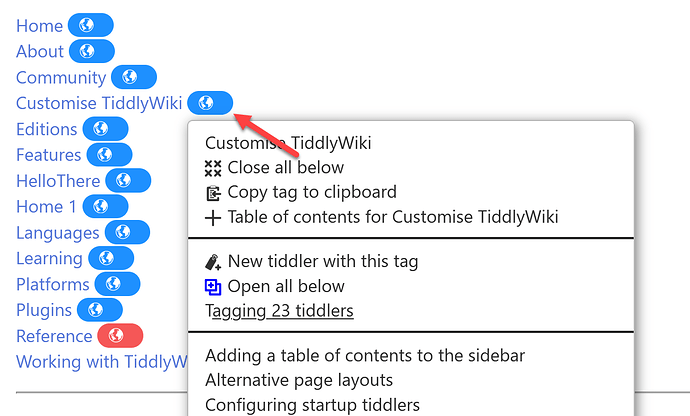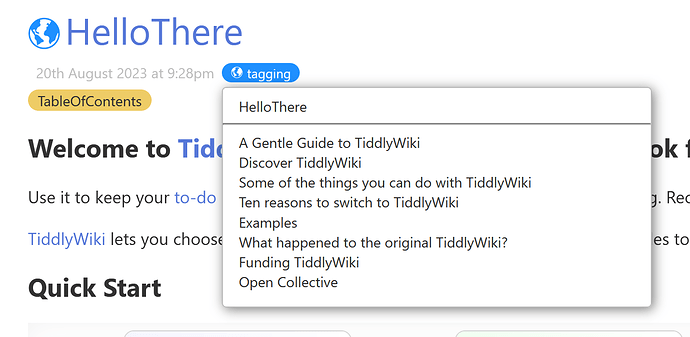a discussion with a view to improving tiddlywiki
I have a useful modification to $:/core/macros/tag that allows tag pills to be provided a label rather than the tag name.
- This is a great alternative for long system tags
- I also have a useful modification to $:/core/macros/tag and S:/core/ui/Tiddlerlcon that allows tiddler icons to use wiki text, just not tiddler icon names.
- using an icon field to test for the existence of the icon tiddler given and use that (default behaviour)
- otherwise it will wikify the content of the icon field allowing conditional icons and or wikitext and Unicode to be used as the icon.
First Question
How do you handle circumstances like this? Do you;
- Make a new tiddler containing both modifications?
- If you do, do you have any tips and tricks?
- Choose one modification over the other?
- Make a new package that incorporates the function of both features.
- Sometimes you can’t simply accept both changes as it requires further intervention to make them compatible.
I can see the possibility of allowing the import process to process the additions it has contained in it, while permitting existing changes to remain. It would be at the designer’s discretion if this will work and there is no clash.;
Second question
One way to resolve this is to consider submitting one or both changes as a tiddlywiki core change so you don’t need to install packages and even face this overwrite dilemma. This has a longer process to achieve it.
- What do you think of me proposing these changes?
- Improve the icon field to permit wiki-text when the icon image tiddler does not exist
- Improve the tag pill macros/templates to allow the tiddler name to be overridden with a label.
Third question
If you have come across the issues these workaround address, how have you delt with it? either a solution or at least a work around?

